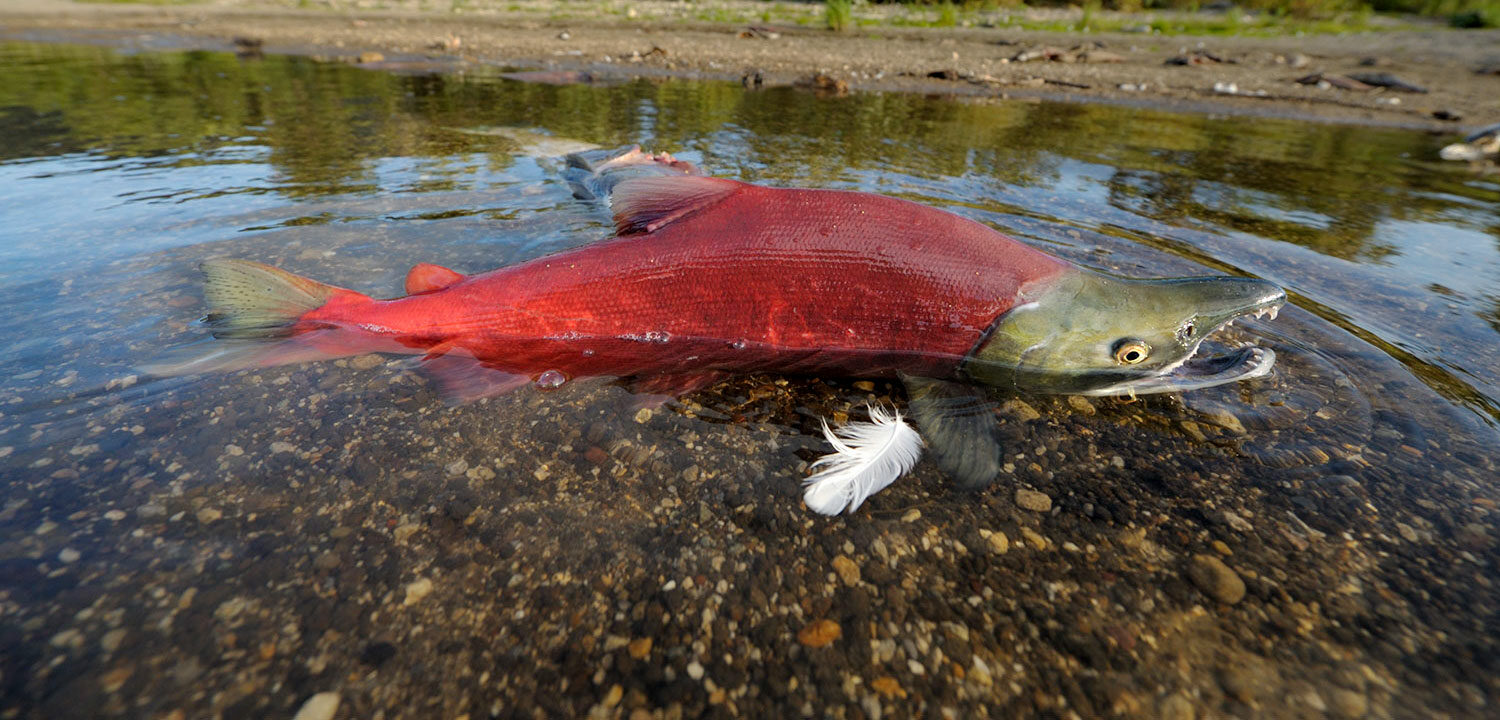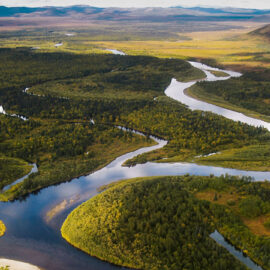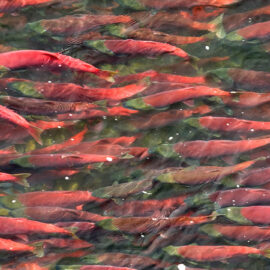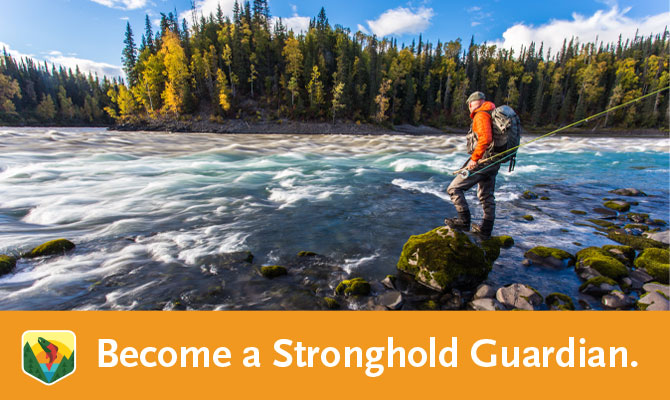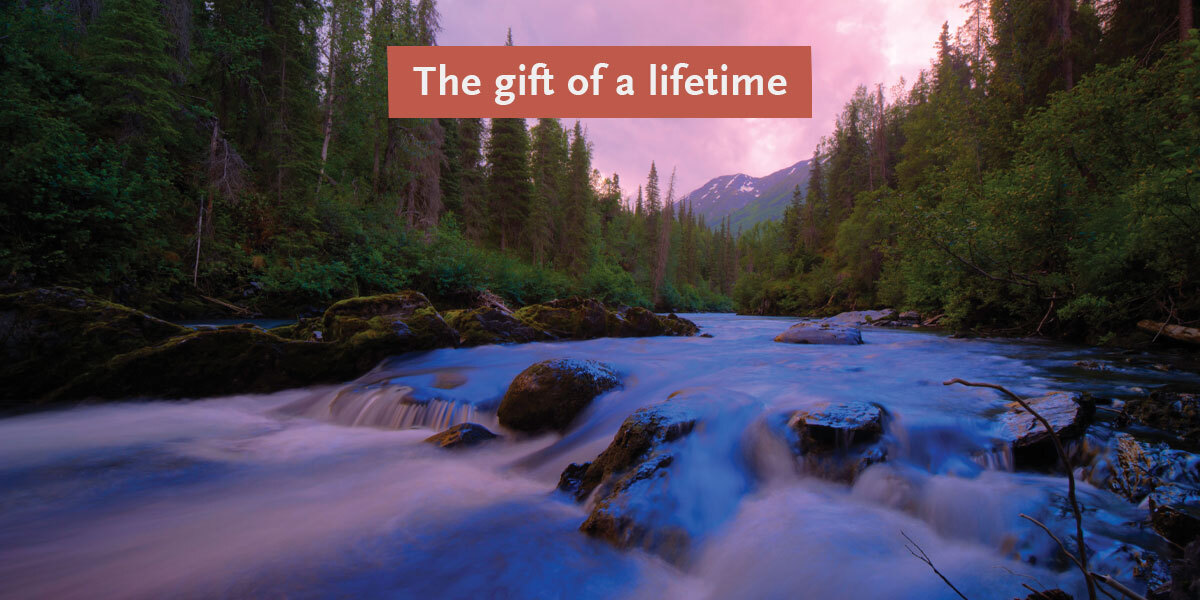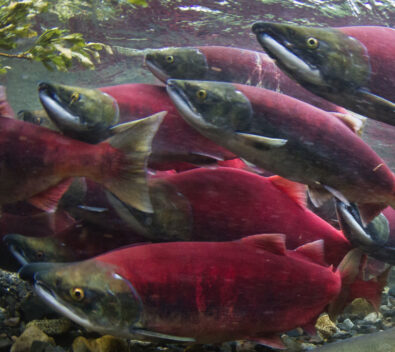
With bright red bodies, green heads and hooked jaws exhibited by spawning adults, sockeye (Oncorhynchus nerka) are a truly iconic salmon species. Sockeye are also the third most prevalent salmon species in the Pacific and span a broad geographic and ecologic range.
Sockeye salmon is the premium Pacific salmon species in the international marketplace, selling for more per pound than all Pacific salmon but Chinook. Sockeye meat, which is tinted orange due to their prolific consumption of red krill during their time at sea, and their highly desirable flavor makes them the focus of many fisheries. Because of their value, sockeye are among the best studied of all species of Pacific salmon. River-rearing sockeye are common in Kamchatka but less so in the eastern Pacific, where most sockeye rear in lake habitats.
Sockeye are more dependent on lakes than any other Pacific salmon. Sockeye juveniles rear extensively in lakes and adults may even spawn on lake shores which makes them more vulnerable to localized threats. Although lake-spawning populations are genetically very distinct from one another, river-spawning sockeye populations are genetically much more homogenous.
Many populations of sockeye have adapted unique life cycles in response to their local conditions, including a resident form called kokanee that lives its entire life in freshwater.
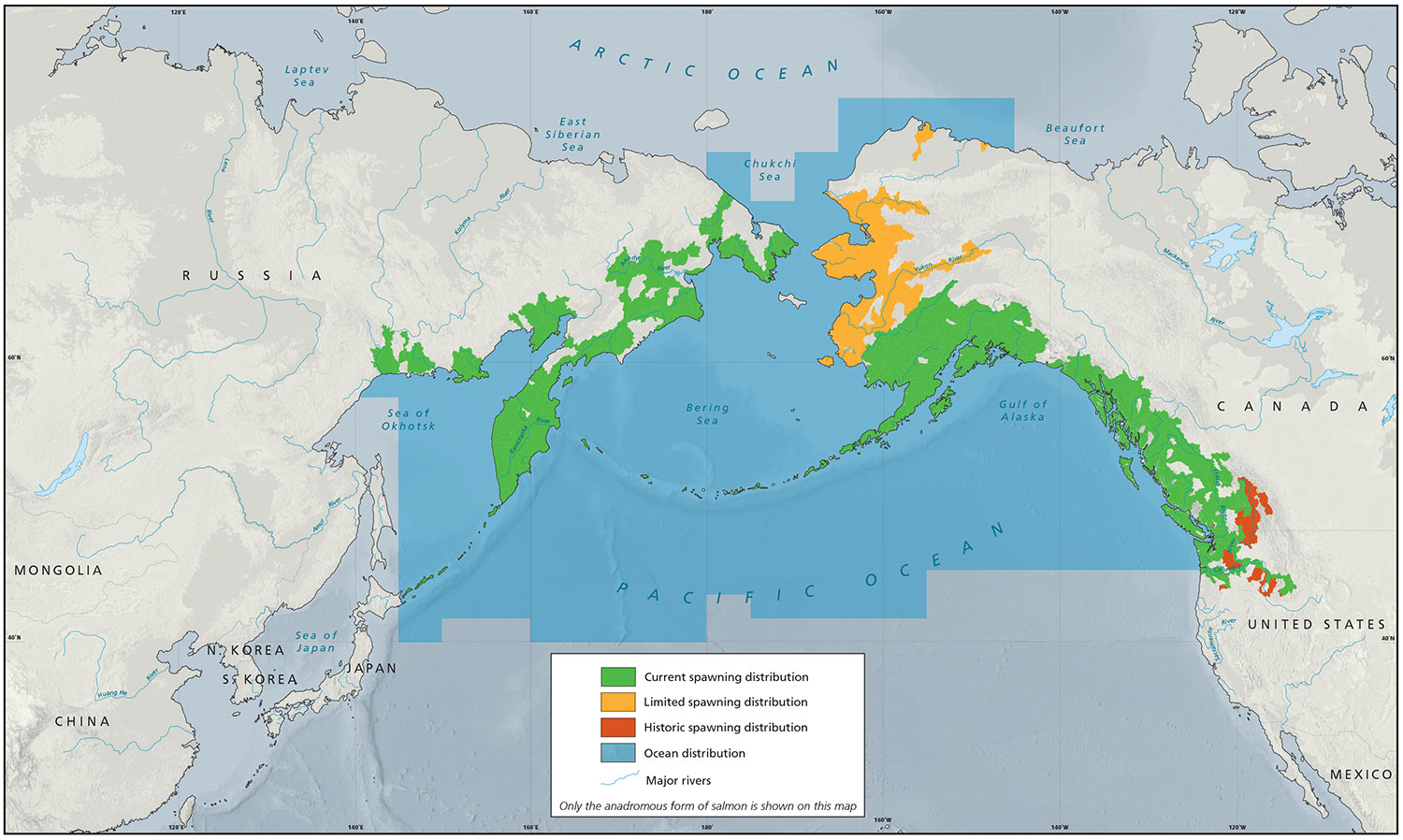
Sockeye depend largely on lake habitats for spawning and are thus more irregularly distributed across the North Pacific than are other species of Oncorhynchus. Lake habitat suitable for sockeye may be found in the geologically active Kamchatka peninsula and glaciated regions from the Kuskokwim River to the Puget Sound and interior Columbia River basin. Sockeye have one of the narrowest latitudinal ocean ranges within Oncorhynchus, limited by their sensitivity to temperature and dependence on glacial landscapes (with abundant lakes). Dams in the Columbia River basin have extirpated many inland populations.
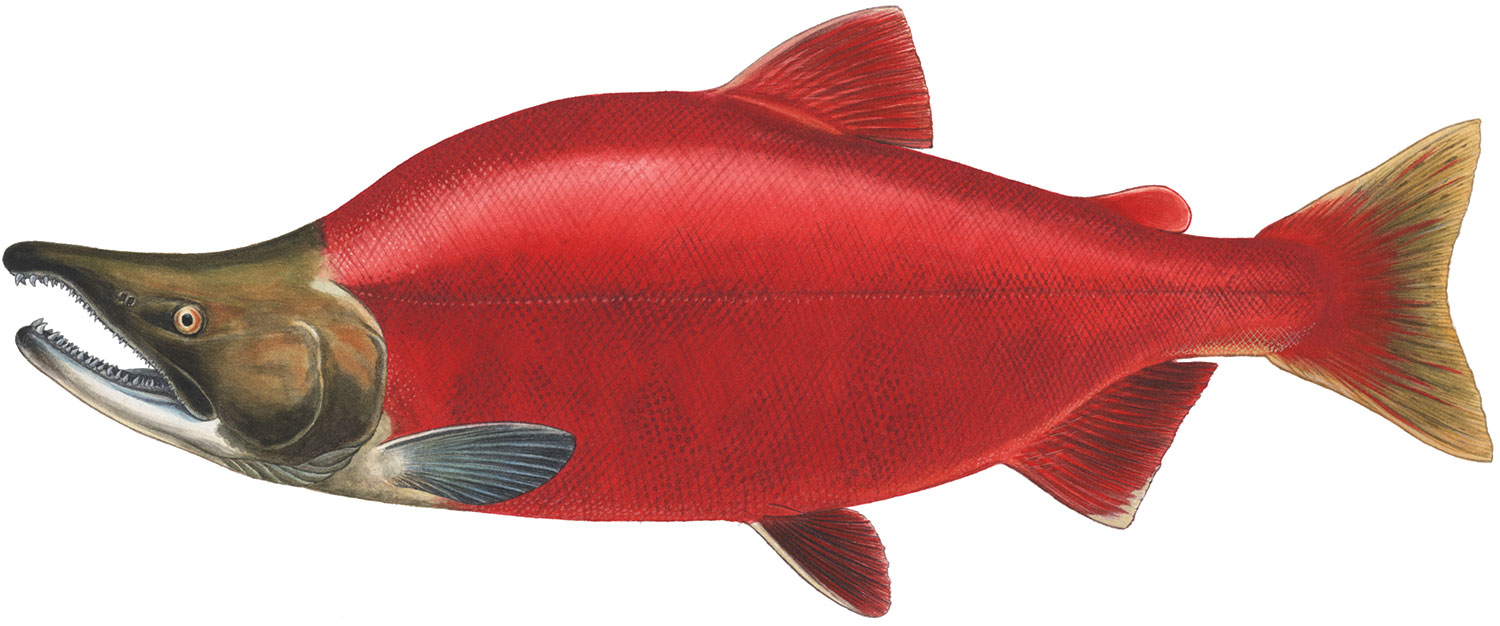
Scientific name
Oncorhynchus nerka
Abundance
In the western Pacific, sockeye salmon are most abundant in Kamchatka. In the eastern Pacific, they are most abundant from Bristol Bay south to the Fraser River. Among Oncorhynchus, sockeye salmon are third in abundance across the North Pacific.
Size
Among Pacific salmon, sockeye are third in terms of average weight, weighing 1.5 – 3.5 kilograms. Sockeye measure around 80 centimeters in length.
Life history

Spawning and rearing habitat needs for sockeye salmon are complex and vary significantly among populations across the North Pacific. Sockeye may spawn in lakes, beaches, or river gravel; they may spend anywhere from a few weeks to three years in freshwater. They may feed in the ocean 1– 4 years prior to spawning. There is even a landlocked sockeye called kokanee which are not anadromous.
Cultural role
Although the canned salmon industry developed first around the chinook harvest on the Columbia River, sockeye soon became the favored species for canning. Its concentrated run timing made it efficient to catch and process at remote sites, while its deep red meat, good flavor, and firm flesh made it appealing to consumers.
International status
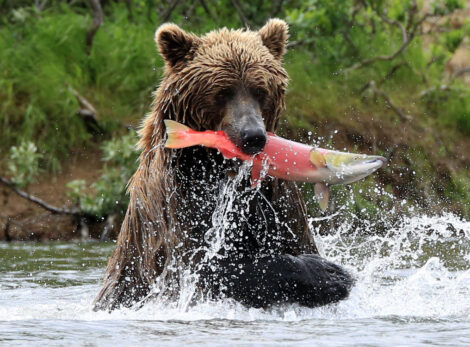
The status of sockeye salmon varies by region and among individual populations. Their global status as a species was given a ranking of Least Concern, the least threatened category, in assessments by the International Union for Conservation of Nature in 2008 and 2011. Many local stocks are either not faring well or have an uncertain status. For example, in 2008 scientists considered 31% of sockeye stocks to warrant listing as Threatened under IUCN criteria. Further, 32% of sockeye stocks were categorized as Data Deficient because of the lack of sufficient information to determine their status. Further, there are several emerging threats (see below) that could endanger sockeye populations that are currently healthy and productive.
Wild Salmon Center worked in conjunction with the IUCN Salmonid Specialist Group over ten years to systematically catalog the tremendous biodiversity of Pacific salmon, identify important knowledge gaps, and assess the overall status of wild salmon based on international standards. A full description of the results of the 2008 and 2011 sockeye assessments can be found on the IUCN Red List site and PLOS ONE.
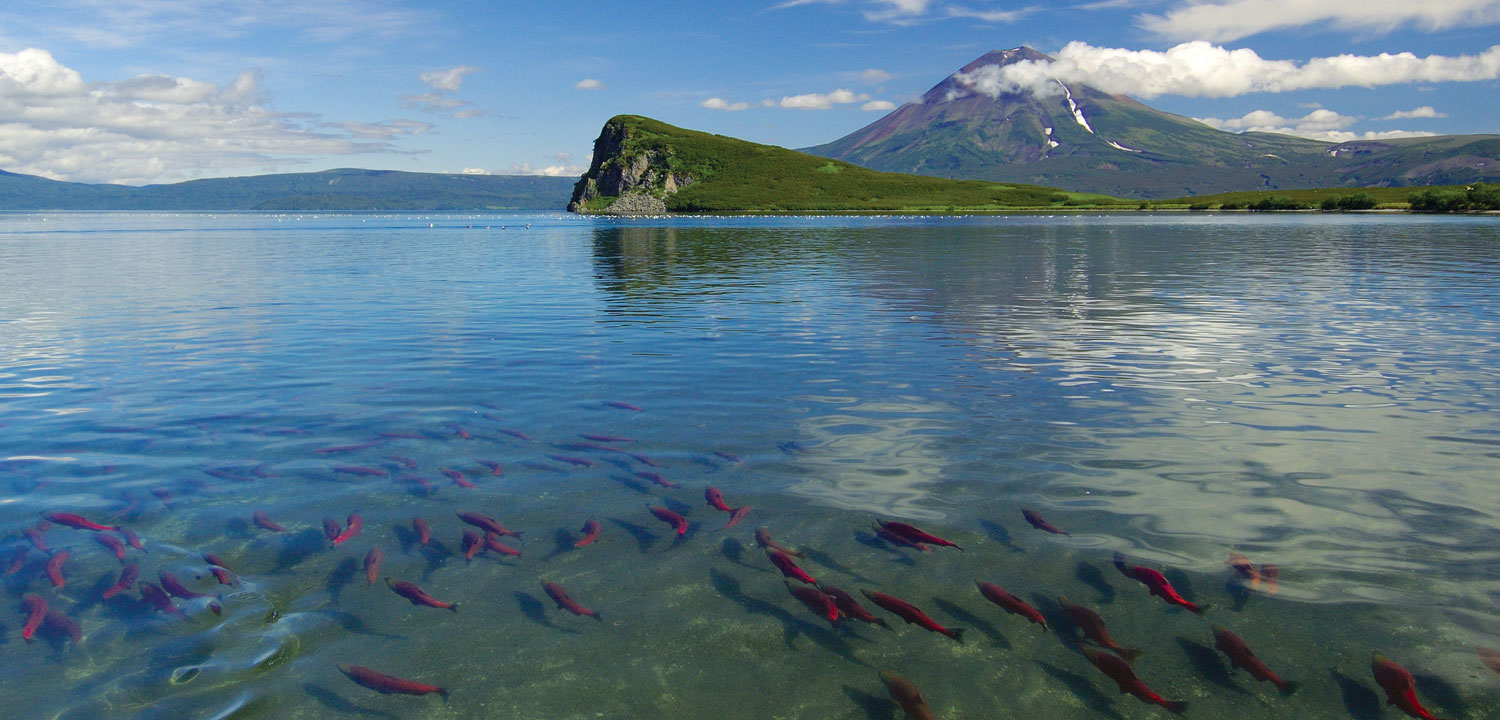
Threats
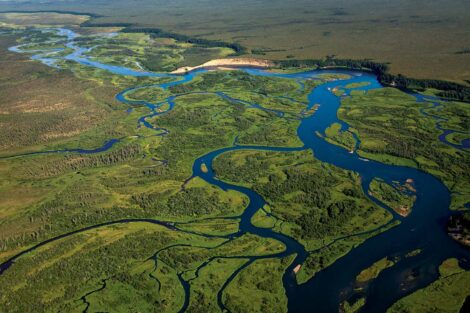
In addition to the challenges faced by many salmon, such as climate change and overfishing, sockeye are threatened by projects like the proposed Pebble Mine in Alaska. This proposed mining development is located in the headwaters of the Nushagak and Kvichak rivers in the Bristol Bay region, one of the most productive salmon ecosystems on Earth and home to the world’s largest sockeye runs. If constructed, Pebble would be the world’s second largest copper/gold/molybdenum mine and would also include the world’s largest dam to hold back billions of tons of toxic tailings.
WSC’s role
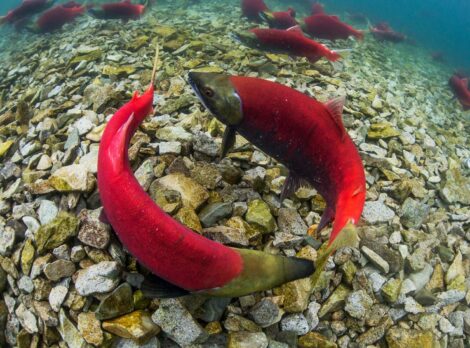
Wild Salmon Center developed a technical report that examines the threats to Bristol Bay’s wild salmon fisheries posed by the Pebble Mine.
We will continue to work with Alaskan partners to protect the region from large-scale mining, on behalf of all those who depend on Bristol Bay’s healthy salmon runs.
Learn more about this topic on our Bristol Bay campaign page.
